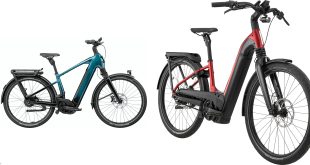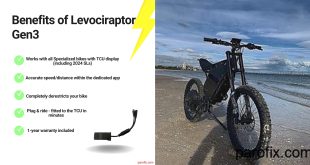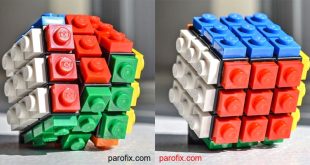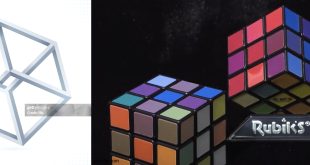Can You Master Solving the Cube?
When most people hear “solving the cube,” they think of a Rubik’s Cube — a mind-bending puzzle that looks impossible until you understand its mechanics. But in the context of sustainable transportation, “the cube” is a metaphor for mastering the many moving pieces of eco-friendly urban mobility. And just like the Rubik’s Cube, the solution isn’t about luck — it’s about strategy, knowledge, and a willingness to twist your perspective until everything clicks.
In this guide, we’ll explore how you can “solve the cube” of sustainable transport with a focus on e-bikes: the sleek, powerful, and incredibly practical machines redefining how we move in cities. Whether you’re a beginner still figuring out the gears or a seasoned rider who can change a tire blindfolded (not recommended), you’ll find actionable tips, personal stories, and expert insights to help you ride smarter and greener.
The Cube of Sustainable Transportation
In urban mobility, “the cube” represents a set of challenges: traffic congestion, air pollution, personal fitness, cost of living, and time efficiency. Solving it means finding a transportation method that balances speed, affordability, sustainability, and convenience. E-bikes hit the sweet spot for many riders — and with the right know-how, they can completely transform your daily commute.
- Speed: E-bikes allow you to dodge traffic jams and reach your destination faster than a car during rush hour.
- Affordability: The running cost is a fraction of what you’d pay for fuel, parking, and maintenance for a car.
- Sustainability: Zero emissions while riding, less road wear, and far smaller manufacturing footprint compared to cars.
- Convenience: Compact, easy to park, and usable in bike lanes — no more circling the block for a spot.
My First Attempt at “Solving the Cube”
When I first bought my e-bike, I thought I had it all figured out — ride to work, save money, save the planet. Easy, right? Wrong. My first ride ended with me carrying a 25 kg e-bike up three flights of stairs because I forgot to check the building’s bike parking policy. I also learned the hard way that if you leave home without charging the battery, you’re basically riding a very heavy regular bike. Lesson learned: mastering the cube isn’t just about riding; it’s about thinking ahead.
Now, years later, I can navigate rush-hour traffic, predict when my battery will hit low, and even time my rides to hit green-light waves. It’s not just commuting anymore — it’s a game I’ve learned to play well.
Technical Details That Make a Difference
Here’s where both beginners and experienced riders can dig in. Understanding your e-bike’s mechanics is like learning the cube’s algorithms — once you know them, everything makes sense.
- Motor Types: Hub motors (rear or front) are common, quieter, and require less maintenance. Mid-drive motors are more efficient for hills and heavy loads, as they use the bike’s gears for better torque.
- Battery Capacity: Measured in watt-hours (Wh). A 500Wh battery can give you 50–100 km of range depending on terrain and assist level.
- Assist Levels: Eco, Normal, and Turbo — choose wisely. Turbo will get you there fast but drain the battery quickly. Eco mode is for range warriors.
- Brakes: Hydraulic disc brakes provide better stopping power in wet conditions — a must for urban riding.
- Drivetrain: Single-speed is low-maintenance but less versatile. Multi-speed lets you tackle varied terrain more efficiently.
Practical Tips for Mastering Your E-Bike
- Plan charging like a pro: Treat your battery like your phone — don’t let it drop to zero regularly. Aim to keep it between 20–80% for maximum lifespan.
- Map smarter routes: Use apps like Komoot or Google Maps (cycling mode) to find bike-friendly roads and avoid dangerous intersections.
- Stay visible: Reflective clothing, bright lights, and a loud bell aren’t optional in busy cities — they’re survival tools.
- Carry a mini toolkit: A multi-tool, spare tube, and a portable pump can turn a disaster into a five-minute pit stop.
- Don’t overload: Respect your bike’s weight limit. Overloading stresses the motor, brakes, and your balance.

Future Trends: The Cube Evolves
The “cube” of urban transport isn’t static — new technology keeps adding new colors and twists to the puzzle. Here are some trends shaping the future:
- Longer-Range Batteries: Solid-state technology promises lighter packs with twice the range.
- Integrated Solar Charging: Some concept bikes already feature panels for trickle charging while parked.
- Smart Traffic Integration: E-bikes that sync with traffic lights to optimize riding speed and safety.
- Lightweight Frames: Carbon fiber and advanced alloys make e-bikes easier to carry and store.
- Subscription Models: Pay monthly for an e-bike, with maintenance and insurance included — no upfront cost.
Frequently Asked Questions
How long does it take to master riding an e-bike?
Most beginners get comfortable within a week of daily riding. Mastery — knowing when to shift, how to conserve battery, and navigating traffic smoothly — can take a couple of months.
Do I need a license for an e-bike?
In most countries, no license is required if your e-bike meets local power and speed limits (often 250W and 25 km/h in Europe). Always check your local regulations.
How do I extend my e-bike battery life?
Keep it between 20–80% charge, store it in a cool, dry place, and avoid leaving it in extreme heat or cold.
Are e-bikes good for long commutes?
Yes — with the right battery size and charging plan. A 500Wh battery can comfortably handle daily commutes of up to 40 km round trip with moderate assist.
What’s the most important safety gear?
A certified helmet, bright front and rear lights, and reflective clothing. Urban riders should also consider a mirror for better rear visibility.
The Final Twist
Just like solving a Rubik’s Cube, mastering the e-bike lifestyle is about patterns, not guesswork. Once you understand the mechanics, the city becomes a playground where you can move efficiently, save money, and reduce your carbon footprint — all while having a blast.
The real question isn’t can you master the cube, but when will you start turning the first side?
 Electric Bike & Bicycle Repair Hub Master DIY electric and traditional bike repairs with practical tips and trusted product recommendations.
Electric Bike & Bicycle Repair Hub Master DIY electric and traditional bike repairs with practical tips and trusted product recommendations.



